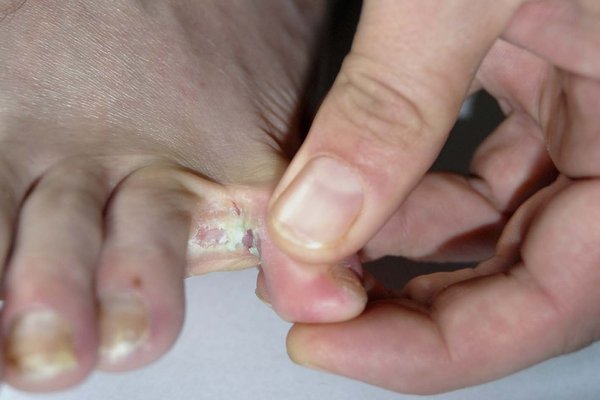Physical Address
304 North Cardinal St.
Dorchester Center, MA 02124
Physical Address
304 North Cardinal St.
Dorchester Center, MA 02124

Contents
Athlete’s foot is a common fungal infection that affects the feet, causing symptoms like itchy white patches between the toes, sore and flaky patches, redness, cracked skin, and even fluid-filled blisters. While over-the-counter antifungal products and good hygiene practices can help in most cases, some instances may require stronger treatments to effectively combat the infection.
Diagnosing athlete’s foot usually involves a visual examination by a doctor, with possible skin scrapings for lab testing. If the infection does not respond to nonprescription products and self-care, prescription-strength creams or ointments like clotrimazole, econazole, or ciclopirox may be recommended. In more severe cases, antifungal pills such as terbinafine or itraconazole might be prescribed. A combination of topical and oral medications could also be necessary for comprehensive treatment.
While undergoing treatment, certain lifestyle adjustments can help ease symptoms and prevent recurrence. Practices like keeping feet clean and dry, using antifungal products, changing socks regularly, wearing well-ventilated footwear, and avoiding sharing shoes can aid in the healing process. Additionally, protecting feet in public places, refraining from scratching the rash, and following proper foot hygiene are crucial steps in managing athlete’s foot.
Preventing athlete’s foot involves maintaining good foot hygiene, wearing appropriate footwear in public areas, and refraining from sharing personal items like towels and shoes. Home remedies like herbal foot baths, apple cider vinegar, or tea tree oil may offer some relief, although their effectiveness has not been extensively studied. It’s essential to continue following preventive measures even after treatment to reduce the risk of recurrence.
Over-the-counter antifungal products containing allylamines or azoles are commonly used for athlete’s foot treatment. These medications work by inhibiting fungal growth or killing the fungus. Studies have shown that topical treatments like allylamines and azoles are effective in clearing up the infection in a significant percentage of cases. However, if topical treatment fails, or if the infection spreads to the nails or becomes severe, oral antifungal tablets like itraconazole or terbinafine may be considered.
While topical treatments for athlete’s foot are generally well-tolerated, oral antifungal tablets can have more side effects, including gastrointestinal issues, headaches, and temporary taste or smell disturbances. Individuals with liver conditions need to be cautious when taking oral medications due to the risk of liver damage. It’s crucial to consult a healthcare provider before starting any treatment, especially if there are existing health concerns or medication interactions to consider.
Athlete’s foot, though common, can be effectively managed with the right treatment approach. By combining prescription-strength medications, proper foot hygiene, and preventive measures, individuals can address the infection and reduce the likelihood of recurrence. Understanding the available treatment options, their effectiveness, and potential side effects is essential in combating athlete’s foot successfully.